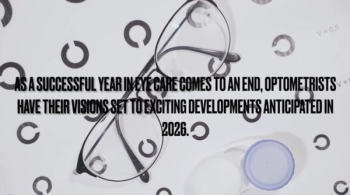
What happened in optometry this week: April 1 - April 5
Catch up on what happened in optometry during the week of April 1-April 5.
Catch up with what Optometry Times shared this week:
Phentolamine 0.75% launches commercially in the US
By David Hutton, Managing Editor, Ophthalmology Times
Viatris announced the US commercial launch of phentolamine ophthalmic solution (Ryzumvi) 0.75% for the treatment of pharmacologically-induced mydriasis produced by adrenergic agonists (eg, phenylephrine) or parasympatholytic (eg, tropicamide) agents in the United States.
How those with low vision, blindness can utilize the ARx AI headset
By Charles Leclercq and Jordana Joy, Associate Editor
Those with low vision and blindness now have a new perspective to view the world around them with ARxVision's new ARx AI Gen 1.5 headset. The headset, paired with Seeing AI and NaviLens apps, allows users to get audio descriptions of the world around them while remaining hands-free. Charles Leclercq, ARxVision CEO, details the uses of the headset in an exclusive interview with Optometry Times.
Meibomian gland dysfunction: At-home treatment devices
By Thomas A. Wong, OD, FAAO, FNAP, Graham Chung, OD, and Harriette Canellos, OD, FAAO, Dipl ABO
As technological advances continue to impact eye care, it is important that we recognize how the optometric profession can properly educate our patients on the proper treatment of ocular surface disease and dry eye. Almost every day I speak with family and friends about
Qlaris Bio announces initiation for 2 Phase 2 trials of QLS-111 for lowering IOP
By Jordana Joy, Associate Editor
Clinical-stage biotechnology company Qlaris Bio is now initiating and dosing for 2 separate Phase 2 clinical trials investigating QLS-111 in patients with ocular hypertension (OHT) and glaucoma, according to a news release. QLS-111 is intended to lower IOP beyond levels currently achievable in patients with glaucoma by targeting episcleral venous pressure (EVP.)
Manuscript outlines increased risk of diabetic eye disease in Black Alabamians, encourages community collaboration
By Bryan Wilson, PhD, MBA, Emily Kaiser Maharjan, Assistant Managing Editor, and Jordana Joy, Associate Editor
A recent manuscript published in The American Journal of Accountable Care works to investigate and overview the disproportionate risk that African American Alabamians have in developing diabetes, as well as identify the 4 main pillars of barriers that keeps this population from accessing eye care. Bryan Wilson, PhD, MBA, executive director medical affairs at Genentech, speaks on the article as a collaboration between Genentech and the American Diabetes Association's (ADA) Health Equality Now initiative.
Newsletter
Want more insights like this? Subscribe to Optometry Times and get clinical pearls and practice tips delivered straight to your inbox.













































.png)


